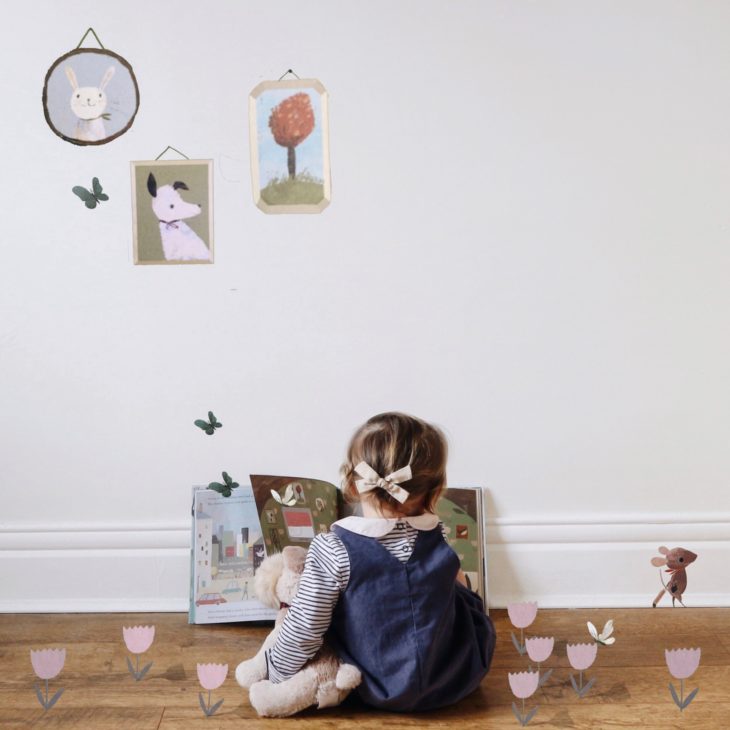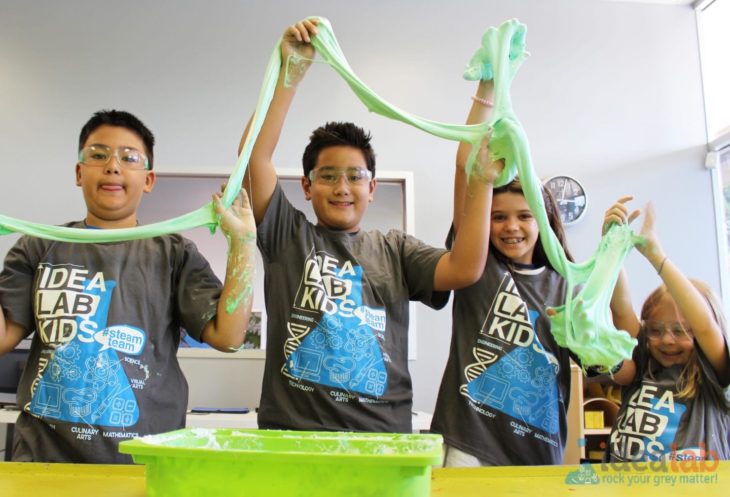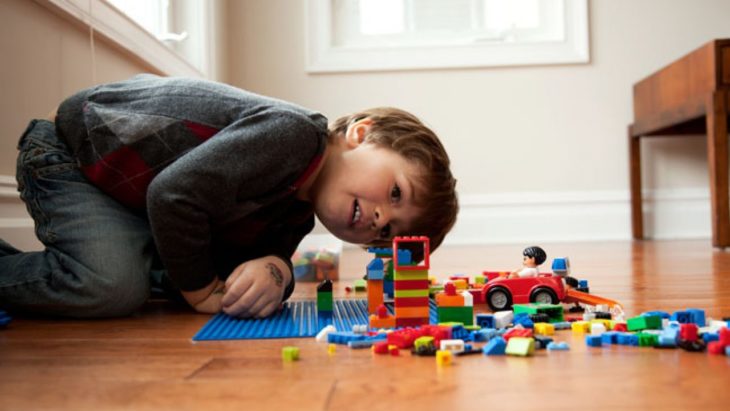Most parents nurture the imagination of their children by enjoying their creative ideas. However, some parents fear that the child will not be able to separate reality from imagination. Therefore, they are consciously or unconsciously ignore children’s imagination, persistently bringing their child back to reality.
Contents
- The Development Of Children’s Imagination
- Ways To Encourage Creativity And Imagination
- 1. Spending Time Outdoors
- 2. Make Artistic Activities An Integral Part Of Everyday Life
- 3. Diamond Painting Develops Imagination And Motor Skills In Children
- 4. Make Up A Scenario
- 5. Thinking Stories
- 6. Limit The Time Your Child Spends In Front Of The TV
- 7. Talk To The Kids
- 8. Do Not Use Rewards As A Stimulation
- 9. Give Your Kid A Space For Creativity
- 10. Don’t Bother With The Results
The Development Of Children’s Imagination

Source: raisingchildren
When it comes to children’s heads, we are surprised every time by the amount of imagination they can produce in the short term. You will agree that the children’s imagination sometimes hides a lot of illogicalities, but it is healthy and always welcome. The imagination helps kids to solve problems, develop compassion, think creatively, expand vocabulary, etc. The development of imagination in a child can only be noticed with the development of speech because then the world around the child becomes expressive. Until the age of three or four, a child cannot exactly distinguish imagination from reality. Children older than that age are aware of the difference between the real and the fictional. But still, children enjoy fantasizing and their presentations of the real things and events they paint on paper are generally quite different from what they truly are in the real world.
Ways To Encourage Creativity And Imagination

Source: naturesway
As imagination and creativity are an integral part of childhood and growing up, they are a part of the child’s daily behaviour. However, if there is no stimulation, this ability will not reach the optimum level. Therefore, with children of school age, this ability will be minimized. Imagination and creativity have their effect on our abilities in adulthood as well. They can affect our choice of profession and a successful career. Here are some suggestions on how you can contribute to your kid’s imagination and creativity.
1. Spending Time Outdoors
Scientific research has shown that spending time outdoors in nature and playing with other children helps to develop intellectual abilities, while due to lack of natural light, children have less concentration. Staying in nature fosters imagination and creativity. It also has a beneficial effect on mental health. Playing in the sand or making a cottage made of branches, a kid can play the fairy tale he or she invented in their original way. It is your job as a parent to accompany your child to the game and to open space for new questions with your answers.
2. Make Artistic Activities An Integral Part Of Everyday Life
Art is a creative form of expression that nourishes the imagination. Through drawing, painting, shaping clay or plasticine, making mosaics, etc. – children express their thoughts and emotions, so their ideas take on their material form. Drawing, painting and in general, any form of artistic creation, is very significant in children as they increase self-confidence, start to have a sense of control, and develop eye-with-hand coordination. When your kid proudly presents his work – he should be encouraged to tell what is in the drawing and to describe his ideas, thoughts and emotions that he has imbibed into his work. In this way, good communication with the child is fostered. Therefore, the child feels loved and valued and develops verbal abilities much better.

Source: siennaandi
3. Diamond Painting Develops Imagination And Motor Skills In Children
Diamond painting is a very good way to cultivate the imagination of your child. Therefore, Diamond Painting Kits are truly unsurpassed, as they are creative, cheerful and will develop fine motor skills in children of all ages. You and your children can enjoy making paintings with different motives such as animals, flowers, nature, and Christmas templates. Fine motor skills will be developed in children as they will use very small diamonds in making these paintings. You can talk to your child about the painting you made together and expand the story. This will develop your child’s creativity and imagination. On the other hand, the child will have the opportunity to ask you all the questions whose answers will help him to better understand the world around.
4. Make Up A Scenario
Help your child realize his or her ideas and make sense of his or her story so that the child will be able to play multiple roles while organizing his or her thoughts and developing his / her verbal skills. Be sure that your kid comes up with some idea creatively and imaginatively. Topics can be common, something familiar to a kid, such as a school, a farm, going to the store, going to a hairdresser, etc. Play with the child, but let your kid take the initiative. Make your child a little superhero.

Source: do512family
5. Thinking Stories
Do your best to make up a story that contains a moral dilemma and let the kid think through and complete the story, speaking from his angle so that he can act imagining that he is the protagonist of the story. You can also modify some of the famous fairy tales or fables to give your kid an example of imagination and creativity at work.
6. Limit The Time Your Child Spends In Front Of The TV
Focusing children’s attention on television, no matter how good the content of what they watch, is a passive form of learning for the child. Encouraging the development of the imagination is a little more difficult task for parents, in the sense that it requires their great commitment and effort to fantasize and be creative. The goal is to encourage the child to actively learn and think. The child should be encouraged to create something new and original through the activity of the whole body and the activation of all the senses. This cannot be realized in front of the TV or without the active involvement of parents.
7. Talk To The Kids
Talk to your kid as much as possible and listen to what he tells you. Ask questions, encourage your child to open up and have no sense of shame in telling their ideas. Allow your child to develop a different opinion from yours and remember: There are no mistakes when it comes to fantasy. There is no right and wrong way to imagine.

Source: momtastic
8. Do Not Use Rewards As A Stimulation
Prize stimulation is not the least good for creative activities. The child should draw because he enjoys the drawing process itself, not because he expects a reward in the form of chocolate after the work is done.
9. Give Your Kid A Space For Creativity
Unless there is enough space for the child to have his or her room, one corner will be sufficient to make your kid feel like it’s his or her own space. In that corner, your kid will be a “master” who has the special power and freedom to play without interfering with the adults in their activities. Therefore, they will have the freedom to relax and develop imagination at their favourite corner.
10. Don’t Bother With The Results
In developing creativity, the process itself is much more important than the results. Talk to your child about their impressions – Is it satisfied? What makes him happy when performing a particular activity? Does he want to continue to deal with it and why?
